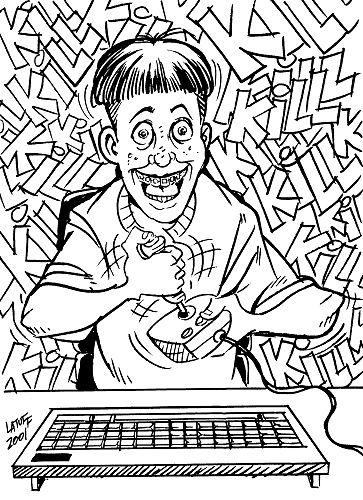If we compare the much loved 60s show “All in the Family” to a contemporary family-based TV situation comedy, we could find many differences. For starters, “All in the Family” was based on the emerging controversial issues and conflicts of the 1960’s. For example, the episode we watched in the screening dealt with the issue of homosexuality. Archie, who is represented as a stereotypical bigot father, is having trouble handling the fact that one of his close friends could be a homosexual, and in addition that a very feminine man is not a homosexual. Similarly, episodes of “All in the Family” display other significant characteristics of the 1960s, like gender roles. The show represented a family in which the father knows best and has the say, while the wife is simply a domestic caretaker. The main issues of the show were represented through the father's bigot eyes. But if we compare to contemporary sitcoms like “Everybody Loves Raymond,” different and less controversial issues are represented. “Everybody Loves Raymond” episodes are based on issues like dealing with annoying in-laws, a fed-up wife, a lazy husband, a jealous brother, etc. Episodes dealt with more individual family problems based on the characters’ relationships with each other, rather than global issues like homosexuality. It seems as though in "All the Family" global issues are faced by a stereotypical family (i.e idyllic family life vs. the outside world), where as in contemporary shows, many divers issues are brought up as a product of conflicting complex personalities and relationships.
The whole representation of family in "All the Family" is different from contemporary shows. Take for example “Everybody Loves Raymond.” Unlike “All in the Family,” in this situational comedy the wife, Debra has more say. In fact, in many episodes it seems as though her opinion has more power over her husband, Raymond's. In the episode of “All in the Family,” Archie seemed to making all the decisions and saying what he pleased, while Jean stood aside, keeping her opinion to herself. But if you ever watch an episode of “Everybody Loves Raymond,” you can see that it’s usually Raymond ltrying to get what she wants. It basically comes down to the power wives have in both shows. In “All in the Family,” the wife is very limited, and is only there to laugh and watch her husband’s shenanigans, but in “Everybody Loves Raymond,” Raymond for the most part must comply with Debra’s wishes, or else he will be walking on thin ice. Furthermore the characters of "Everybody Loves Raymond," and most other contemporary shows are more complex, and less stereotypical. Archie, for example, is a stereotypical bigot, whereas Raymond plays a husband with a more complex personality.
However, there are many characteristics that “All in the Family” and contemporary sitcoms like “Everybody Loves Raymond” share. For example, in both shows, the wives stay home and take care of the kids, and the husbands work and make the money. Furthermore, in both shows, the husband is into the stereotypical manly activities, like sports, and beer, and hanging with the men, while the wife spends more time cooking, cleaning, and hanging out at home.
With differences and similarities in mind, it's safe to conclude that both shows represent their day and age; "All in the Family" in the 1960s, and "Everybody Loves Raymond" of the 1990s/2000s.












